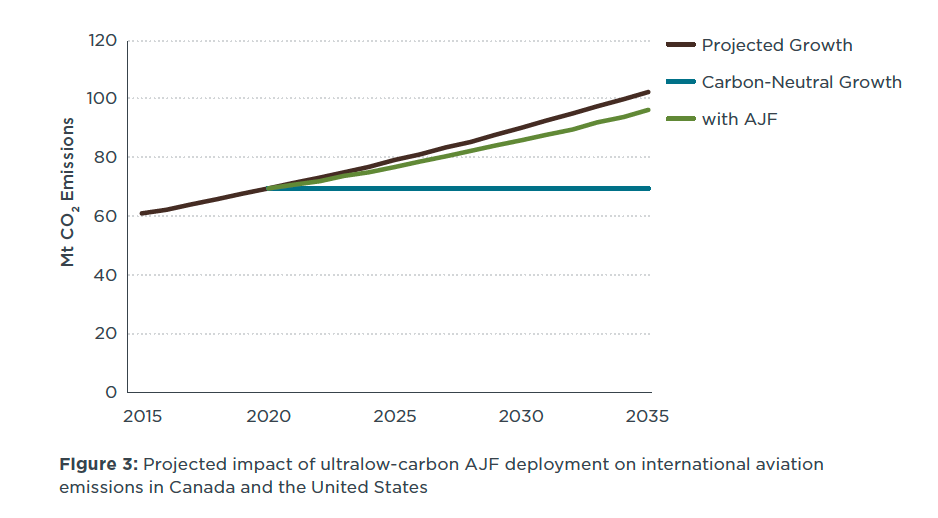Briefing
Alternative jet fuel development and deployment in North America
International aviation GHG emissions from airline carriers based in Canada and the United States increased from 36.2 to 60.2 million tonnes (MtCO2e) per year from 1990 through 2015—and they are projected to keep growing by 2.6% each year through 2035. Globally, international aviation emissions are projected to grow at a faster rate—4.3%—through 2035. To combat this steep trajectory of emissions growth, the International Civil Aviation Organization (ICAO) has committed to carbon-neutral growth from 2020 onward through a combination of through efficiency improvements, switching to fuels with a lower carbon intensities, or reducing emissions outside the sector through the purchase of carbon offsets.
ICAO’s primary policy for reducing the international aviation sector’s emissions is the Carbon Offsetting and Reduction Scheme for International Aviation (CORSIA), the first time a market-based measure (MBM) has covered an entire sector internationally. Together, the U.S. and Canada must reduce their international aviation emissions to 69 million metric tonnes of CO2 annually by 2030. North America could be well-positioned to develop its own low-carbon AJF from the domestic feedstock supply, though the impact of AJFs on North American aviation emissions depends strongly on the mix of feedstocks used to supply AJF to the aviation sector. Fuels made from wastes, agricultural residues or energy crops will make the largest GHG reductions, whereas the impact of fuels made from food crops is more mixed, with some feedstocks generating indirect land-use change emissions that undermine their GHG benefits relative to petroleum.
This study finds that the high expense of AJFs relative to the low projected cost of offsets in the near future make it unlikely that CORSIA alone will drive high levels of fuel switching. While North America possesses a relatively high availability of the feedstocks to produce sustainable, low-carbon AJF than do other world regions, the fuel pathways remain constrained by feedstock availability, cost, and time it would take to commercialize an advanced AJF industry. To expand AJF deployment, the U.S. and Canada would likely need to implement supplementary policies that specifically incentivize AJF production along with full life-cycle emissions accounting to ensure that GHG targets are met.

